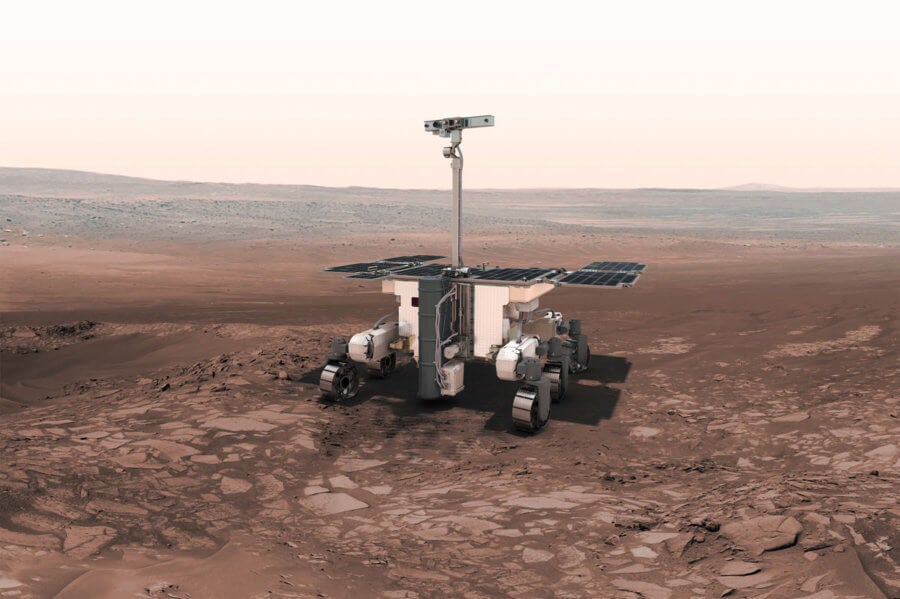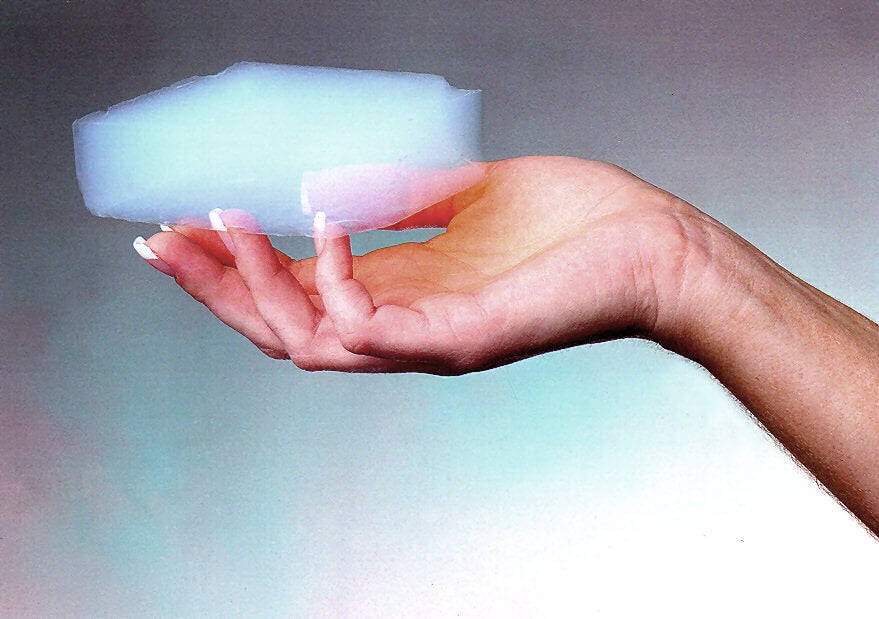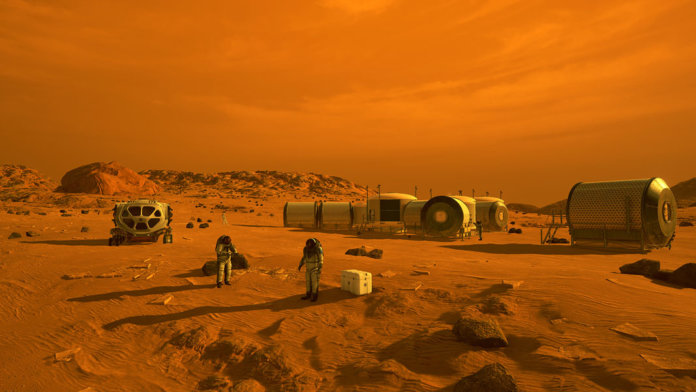Transforming the red planet to support life has long been a dream of science fiction. Mars is now too cold to support life. Its atmosphere is also too thin to protect any living organisms from harmful radiation. But a new study suggests that local conditions could be changed using an inch of “aerogel,” a synthetic and ultralight material made by taking a gel and replacing the liquid component with a gas.
The authors behind the paper, published in Nature Astronomy, claim the technique could produce habitable regions on the red planet and potentially allow life to develop and thrive thanks to photosynthesis, the process by which plants can convert sunlight into energy. But is this really the case? And if so, should we do it?
Some 3.8 billion years ago, when life was starting on Earth, conditions on Mars were habitable. The red planet had water on the surface, clouds in its blue sky, and volcanism provided part of a water cycle. We know all this from space missions, which have spotted signs of dried up water-crafted channels on the surface. Meanwhile the Opportunity and Curiosity rovers have proved that these features were due to water, by finding tell-tale water-rich minerals.
A magnetic field also protected Mars from harmful space radiation up to 3.8 billion years ago. This was revealed by Mars Global Surveyor, which found crustal magnetic fields in the older, southern highlands. These are the only remains of an ancient global magnetic field, similar to Earth’s magnetic field now.
Cold and Dry
These habitable conditions, however, changed 3.8 billion years ago. The magnetic field disappeared. We think this is because Mars lost the heat left over from its formation more quickly than Earth did. This may have been augmented by a large collision which formed the Hellas basin on Mars. Unprotected by a magnetic field for billions of years, Mars’ atmosphere has been scavenged away to space. Some of the water was lost that way, and some went underground and remains as permafrost and in subsurface “lakes.”
The surface now is inhospitable for life as we know it. The thin carbon dioxide atmosphere, less than one percent of Earth’s atmospheric pressure, means surface conditions include high fluxes of harmful radiation from the sun and the galaxy. The surface environment is also cold: 0-10°C during the day but down to below -100°C at night.

But it’s not impossible that life could have once flourished on Mars, or even exist there today, albeit unlikely. With the Rosalind Franklin (ExoMars 2020) rover, to be launched in 2020, we will drill up to two meters under the harsh Martian surface to search for signs of ancient life. This goes beyond what Opportunity and Curiosity could achieve with their 5cm drills, and gives the best chance of any planned mission to find biomarkers and evidence of life. Also, it is hoped that an international sample return mission may bring back the rocks cached by NASA’s Mars 2020 rover.
With these missions we may be able to answer the age-old question of whether humankind is alone in the universe. Mars itself, along with other prime astrobiological targets in the solar system, including the moons Europa and Enceladus around Jupiter and Saturn respectively, should be kept in their pristine state until we have answered this fundamental question.
Terraforming Mars
Ideas for changing or “terraforming” Mars, by introducing an atmospheric greenhouse effect to warm it, have been around for a long time. Recently it was shown that the carbon inventory on Mars is insufficient to do this, apparently killing off these ideas for now.

But the new study suggests a different approach: that smaller areas of Mars could be covered by a thin (2-3cm) covering of aerogel, providing a greenhouse effect by locking in heat. Using lab experiments, the researchers showed that this could increase the surface temperature by 50°C. The authors then used a climate model of Mars to confirm that the gel would be able to keep the water below it liquid up to a depth of several meters. It would also protect against harmful radiation by absorbing the radiation at UV wavelengths while still allowing enough light for photosynthesis.
This suggests that a habitable region could be produced, enough even to grow some plants to fuel eventual human exploration. The idea is certainly interesting, and according to the experiments potentially plausible. But it ignores the other key issue affecting life on Mars: cosmic radiation. Silica aerogel, the proposed material, is sometimes called “frozen smoke” due to its low density. But because it is so low density, cosmic radiation of higher energy than ultraviolet light can pass through it almost unscathed. Without magnetic protection, this radiation threatens any life on the Martian surface, just as it does today.
Mars is the planet nearest us where life could have started. And to artificially change the environment would threaten one of nature’s “experiments” which has been billions of years in the making, with life either evolving or not since the planet’s formation. We go to great lengths to keep missions like Rosalind Franklin sterile, in line with international rules, so that we do not disturb any past or even present life. If we did go ahead with terraforming plans and find living organisms on Mars later on, it would be hard to know whether these were natural Mars microbes or just contaminants from Earth thriving under the aerogel.
Large-scale experiments like this would affect the pristine environment so much that we should not do this yet. At least until after Rosalind Franklin and Mars sample return, let’s leave Mars untouched so we can discover whether we are alone in the universe. When the science is done and we are ready to go, aerogel blankets may be worth a further look.![]()
Andrew Coates, Professor of Physics, Deputy Director (Solar System) at the Mullard Space Science Laboratory, UCL
This article is republished from The Conversation under a Creative Commons license. Read the original article.
Image Credit: NASA.



